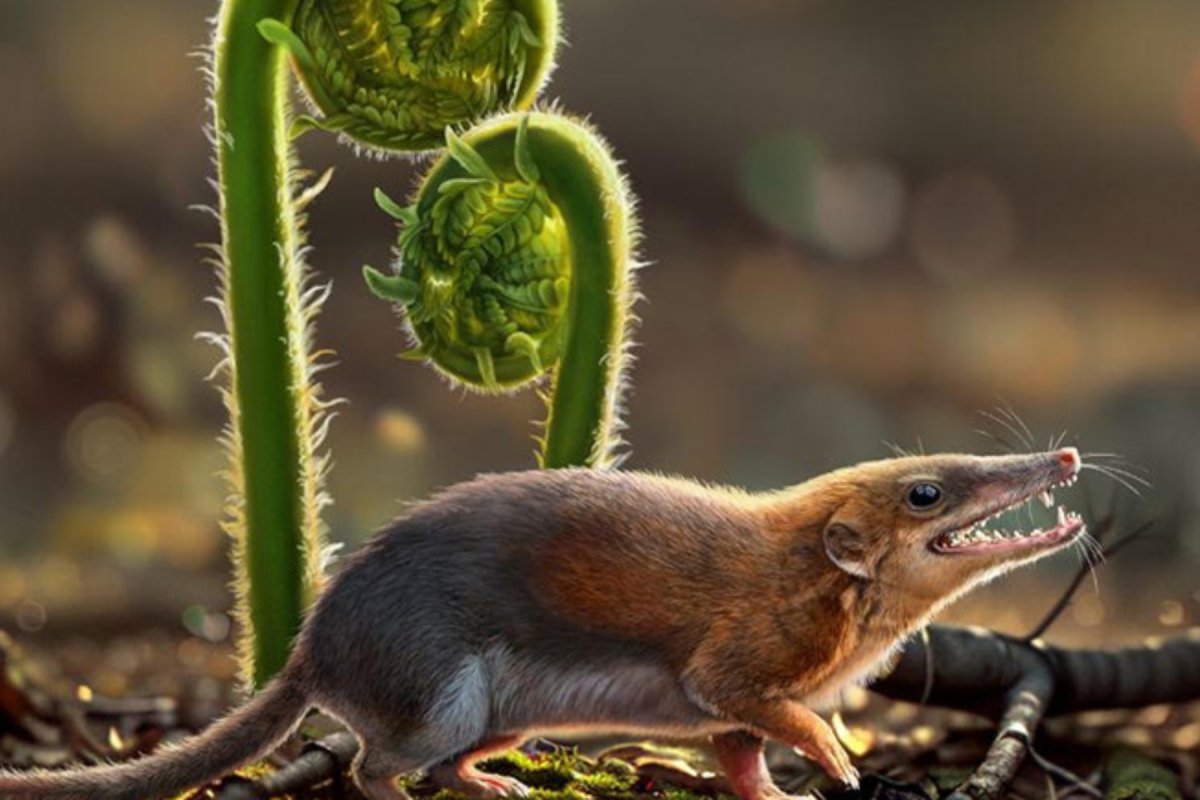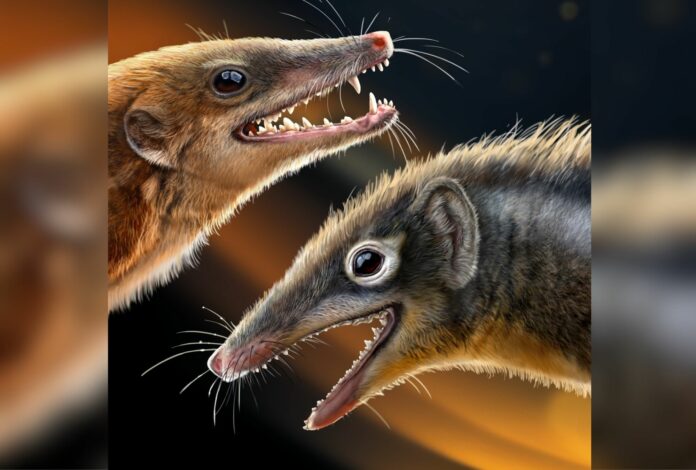Two brand-new species of early mammals from the Jurassic period have been discovered, revealing the secrets of how we got our ears.
Two new papers in the journal Nature suggest that the two fossilized specimens resemble modern weasels and are species of ancient mammalian animals.
These new species are hoped to give paleontologists insight into how the mammalian middle ear evolved from the joints of the jaw, millions of years ago.
One of the new species is a type of ancient mammal called a shuotheriid, discovered in a Middle Jurassic fossil site in Mongolia, and has been named Feredocodon chowi. The other new species, Dianoconodon youngi, was found in the Early Jurassic Lufeng Biota in China and is more similar to a type of ancient mammal called morganucodon.
IVPP
Both of these new species had special characteristics in their jaws and ears that indicate that they were waypoints in evolution as the jaw joint was slowly evolving towards being specialized for use in hearing. The Middle Jurassic spanned around 174 to 163.5 million years ago, while the Early Jurassic was even longer, between 174 million years ago and about 201 million years ago.
“The significance of this discovery is that both species have mandibular middle ears (MdME), and the morganucodontan-like species have new postdentary bone structures,” study author Patricia Vickers-Rich from the Monash University School of Earth, Atmosphere and Environment, said in a statement. “This species is losing the load-bearing function of its articular-quadrate joint, whereas the shuotheriid species is showing characteristics suited for purely auditory function.”
The Dianoconodon youngi fossil’s jaw joints appear to have lost their load-bearing ability, while its mandibular inner ear seems to be better adapted for hearing. The bones of the Feredocodon chowi specimen—which lived later on—appear even more specialized for hearing.
These new species are, therefore, representative of the intermediate period between the jaw joint being used for eating and for hearing, allowing paleontologists a greater understanding of how our ears came to be the way they are today.
“Studying transitional stages in evolutionary history is crucial,” said Vickers-Rich. “The fossils show incremental modifications that demonstrate the complex process of adaptation that resulted in the advanced hearing systems found in modern animals.”
The Feredocodon chowi fossil also sheds light on the mysteries of the teeth of ancient shuotheriids, helping paleontologists figure out the ancient mammal family tree. These animals had a special basin-like structure in their molars not seen in modern mammals, leading them to be classified evolutionarily with a group of animals named australosphenidans, which includes modern monotremes like echidnas and platypuses.
However, this classification has long been contested by paleontologists.
“This unique tooth pattern has hindered our comprehension of shuotheriid relationships and the first steps in the evolution of mammaliaform species,” Vickers-Rich said.

Chuang Zhao
Now, the new species of shuotheriid, Feredocodon chowi, reveals that these animals had teeth more similar to the molar pattern of a group of different animals—the docodontans.
“Our study questions current theories and offers a new viewpoint on the evolutionary history of mammaliaforms,” Vickers-Rich said. “We provide vital insights into the phylogenetic relationships and evolutionary trajectories of shuotheriids, little known until recent discoveries in China, by explaining the intricate tooth shapes and occlusal patterns.”
Therefore, shuotheriids are evolutionarily separate from ausktribosphenids and should be grouped more closely to the docodontans.
“The study emphasizes the presence of a significant variety of tooth morphology in early mammaliaforms, indicating unique ecomorphological adaptations throughout the evolutionary development within mammals,” Vickers-Rich said.
“The dental modifications such as transverse broadening of posterior teeth, cusp rearrangement and even rotation indicate the many ecological niches early mammaliaforms inhabited.”
Do you have a tip on a science story that Newsweek should be covering? Do you have a question about ancient mammals? Let us know via [email protected].
Uncommon Knowledge
Newsweek is committed to challenging conventional wisdom and finding connections in the search for common ground.
Newsweek is committed to challenging conventional wisdom and finding connections in the search for common ground.


